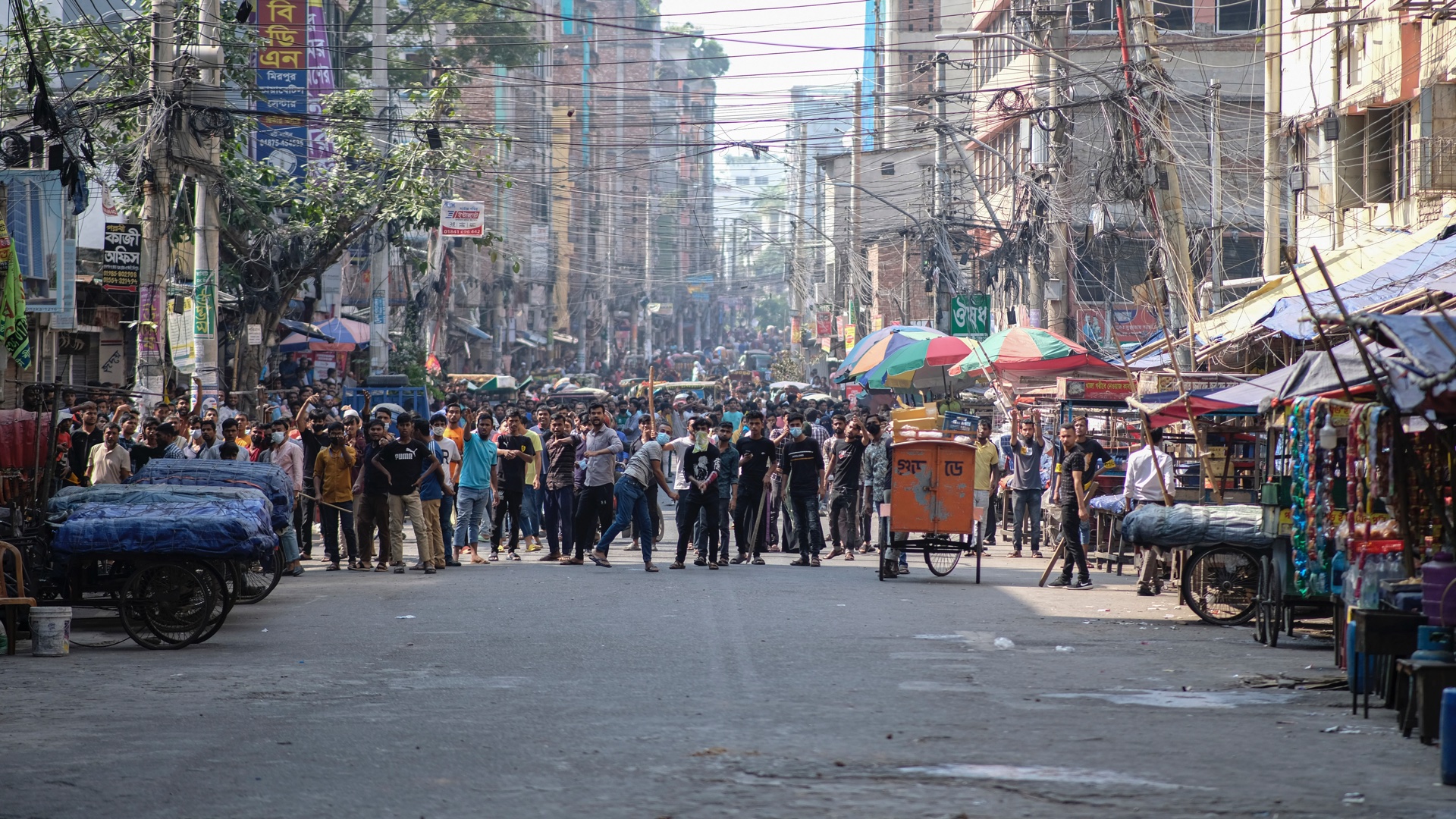
A major reckoning is happening globally, as many countries that receive foreign aid are using their growing autonomy to press for change.
Canada is far behind in these discussions, still clinging to the stereotypical assumption that the world’s poor cannot do without them.
Canada’s foreign-aid assistance budget as of 2023 is $6.9 billion, which represents a dramatic cut of 15 per cent from the previous year. In the context of the ongoing effects of COVID-19 and global conflicts, this cut has led to pushback from many in Canada’s domestic civil society who want to see Canada dramatically increase its aid budget instead.
The heart of the debate is a framing of the issue of global poverty in a way that can ultimately do more harm than good.
The traditional argument goes that providing more aid offers Canada a greater global presence and foreign policy leverage in a world fraught with geopolitical competition. There have been some prominent examples of this recently.
In February, an open letter signed by a group of 75 Canadian organizations made the case to Finance Minister Chrystia Freeland to increase international aid funding from the $8.15 billion pledged in the 2022 budget to $10 billion a year by 2025.
That was followed in August by a Globe and Mail editorial making the case that the federal government’s support for international development assistance is inadequate. The Globe wrote “the soft power that comes from a generous and wisely invested foreign aid program is a key complement to the ability to deploy Canadian forces.”
Connecting aid to military interests abroad is not just ethically and morally incorrect, it is a step backward, echoing the post-colonial, post-9/11 era in multiple ways. We see this today in the events following October 7, 2023, with Canada refusing to support a ceasefire and providing military support to Israel while simultaneously offering humanitarian aid to Palestinians being obliterated by military might.
Foreign aid is also no longer the “soft power” it used to be. It is now becoming a highly contested issue for many activists in what is commonly called the Global South.
Calls have been getting louder for donors and international NGOs based in the Global North to step back and allow more domestic forms of assistance, such as trade and domestic economic revenue, to flourish. Scrutiny of colonial and racist underpinnings in the foreign-aid system is front and centre in a heated global discussion.
The Globe editorial adds “with flagging aid and weak military spending … (Canada’s) reputation has faded over the years.”
A problem with this assertion is that using aid as a way to reach the global stage turns foreign aid into a competition for global influence. This has become a key argument against aid; that it is a way for donor countries to exert control over the recipient country’s policies, priorities and economies.
The letter sent to Freeland echoes similar sentiments that suggest only rich, white countries are capable of “saving” poor, non-white ones.
For instance, it states: “Our investments have acted as a bulwark against rising authoritarianism by supporting democracy, women’s and children’s rights, and development in countries where rights are under attack … If Canada fails to maintain its commitment to year-on-year increases in international assistance in the federal budget this spring, all of this is under threat.”
Aside from the evidence for such claims being sporadic, short-term and too thinly spread out, more aid doesn’t necessarily mean better aid. What often goes unseen is that a vast majority of all countries’ foreign aid doesn’t actually go directly to the people it claims to benefit, according to a 2022 report
Canada is no different. An analysis covering three years of Canada’s aid disbursals from 2019 to 2022 shows that most of Canada’s aid funding was directed to organizations within Canada, which then further disbursed only some of it to “partner organizations” abroad, (table 1). On average, only about 12 per cent of the funds actually went directly to organizations in recipient countries.
The letter further claims that “Canada’s feminist policy transformed aid.” In addition to overstating a vague claim, Canada’s current model of aid assistance was instantly flawed when the Liberals titled it as being “feminist.”
Setting a foreign-aid agenda based on the concept of feminism – which is interpreted differently throughout the world and doesn’t even exist in many countries – demonstrates significant shortcomings in how Canada is interpreting global affairs.
In addition, it becomes embarrassing when Canada then chooses to sell military equipment to countries known for espousing anti-feminist positions and for abuses of gender equality and human rights. Importantly, this contradiction pits aid objectives against foreign-policy objectives. We are witnessing this again in Gaza today, where women and children in their thousands are the main casualties of sustained military aggression. How can this align with a feminist stance?
Both the letter and the Globe editorial suggest that without sending more money abroad, Canada’s presence overseas will be overshadowed by other countries. The letter overtly states: “Foreign aid is not a handout. It is an investment in the type of world we all want to see.”
The problem is that foreign aid is exactly that – a handout. That is the definition of any funding that, if removed, would leave a gaping void behind. The disconnect between foreign-aid programs and the reality on the ground is increasingly being used as an argument for the end of aid.
Canada needs to change the focus of its education aid to South Asia
Currently, Canada’s foreign aid commitment, at least in dollar terms, is just fine. Handwringing over increasing aid budgets that can appear to have no clear direction runs against what aid claims it is meant to do: foster an equitable, capable and self-sufficient world.
It also means Canada is ignoring one of the most important principles of aid: being effective in achieving its stated outcomes. This points to not the amount being invested in aid, but the importance of its approach, design and utility. Less aid can also do wonders if it is done effectively.
Continuing to attach aid to achieving more global influence can have negative consequences, as we have seen in the case of Canada’s allies, notably the United States and the United Kingdom. Once again, the current situation in Palestine, where Canada has been contributing humanitarian aid via the United Nations for several years, is a fateful reminder that there are more contradictions in aid than there are affirmations.
The best results of foreign aid are not those that choose to meet an archaic numerical mark of 0.7 per cent of GDP set by rich countries more than five decades ago.
A reduction in foreign-aid assistance isn’t a bad thing for Canada or the world provided it is done for the right reasons – empowering recipient countries to progress. It is when countries no longer need aid that aid can be declared a success.









